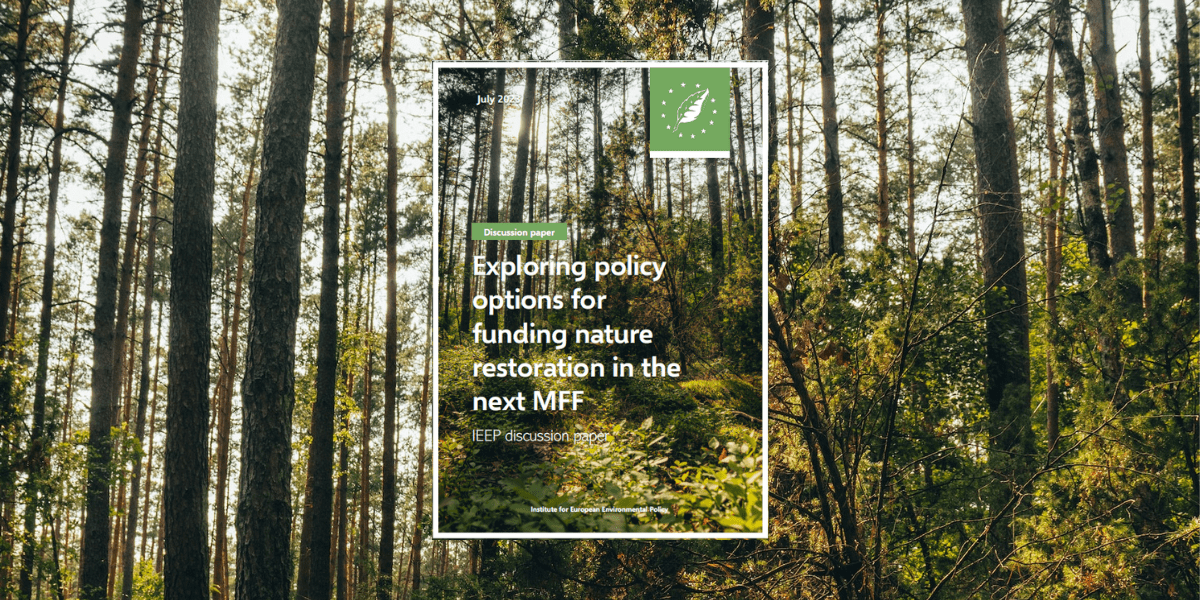AUTHORS: IEEP
This discussion report is the result of a workshop on policy options for funding nature restoration in the next MFF, ranging from a new stand-alone financing mechanism to stronger mainstreaming and earmarking nature restoration funding within the current EU funds. It is becoming increasingly clear that nature restoration needs to be scaled up, and that funding for nature needs to be doubled.
In this report we explore different viewpoints on the opportunities, barriers, and feasibility of the policy options available and identify some enablers for each option. The viewpoints represented at the workshop come from EU environmental Non-Governmental Organisations (NGOs) and representatives of sector organisations of farmers, forest owners and managers, and other land managers. The workshop was convened by IEEP on Tuesday 20 June with representatives of four sector organisations representing farmers and foresters and representatives of four environmental NGOs with focus on farming, land use and marine issues, plus some members of the European Commission as listeners.
The discussion which set the basis of this report, took place in the middle of tight negotiations in the European Parliament’s Environment Committee and the EU Environment Council on the EU Nature Restoration Law (NRL) in which the options and feasibility of dedicated EU funding for nature restoration are a key factor. However the aim of this work is to discuss possible options independently of the current specifics of the nature restoration law proposal.
The workshop discussed three broad policy options: 1) a new stand-alone nature restoration fund in the next MFF; 2) strengthen mainstreaming targets in the next MFF and strengthen mainstreaming/earmarking in current fund architecture; and 3) leveraging funding outside the MFF, including private finance. Participants supported the first option most strongly, but differed in their perspectives on the actual approach needed.
Given the magnitude of change involved and the time required for preparations and knowledge gathering at Member State level in particular, a period of transition would be required. If a new fund were created, it is unlikely to be fully operational until the mid 2030s. This underlines the importance of launching this debate ahead of the next MFF if any new fund is to have serious impact in the crucial decade of the 2030s.


